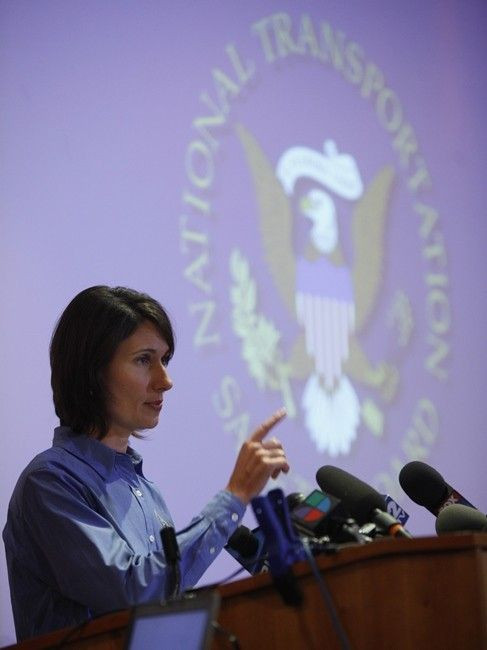U.S. lags on traffic safety, as Feds urge states to act

Federal officials urged states to take action on passing traffic safety laws on Tuesday, as a new study found the United States was lagging in reducing traffic fatalities compared with other high-income nations.
From 1995 to 2009, traffic fatalities dropped 52 percent in France, 38 percent in the United Kingdom, 25 percent in Australia, and 50 percent in 15 high-income countries for which long-term fatality and traffic data are available. But they dropped only 19 percent in the United States, a committee within the National Research Council reported Tuesday.
The report came as the National Transportation Safety Board updated the status of its Most Wanted List of Safety Improvements directed at state governments, at a presentation in Washington. State governments across the U.S. have varying degrees of compliance with federal recommendations on various safety initiatives.
There is a notable gap between traffic safety progress in the U.S. and other nations that deserves our attention, said Clinton V. Oster Jr., committee chair and professor, Indiana University, Bloomington. The U.S. could learn from the effective strategies in place elsewhere to reduce traffic injuries and fatalities.
The committee found that the area which needs most improvement in the United States may be in management and planning. An essential element is a credible commitment to the public to improve safety and regular monitoring and evaluation to determine the effects of actions taken, the report states.
These management practices have produced success in other countries, said Oster, but are lacking in the traffic safety programs of most U.S. states.
Federal regulators and states should develop a new model for plans to specify resource requirements and expected outcomes of safety interventions, the committee said.
Among the tools which face opposition in the U.S. are automatic enforcement of speed limits and frequent roadside sobriety checks, the committee found. Among the main hindrances to putting in place those measures are legal restrictions, popular opposition and cost considerations, the report states.
States need to do more to improve transportation safety across various categories, the NTSB said on Tuesday.
In the board's Most Wanted list for the states was new legislation for motorcycle safety, eliminating distractions for young drivers, improving vehicle occupant protection, and eliminating hard core drinking and driving.
Presenters outlined progress by states in implementing recommendations from the board, showing varying degrees of cooperation by states in passing safety laws.
Deborah Hersman, the NTSB Chairman, said that while the safety board was interested in pursuing safety improvement by urging states to act, that approach could change.
If that approach is not effective, members of this board are committed ... to look to other avenues, she said.
Methods could include action by federal lawmakers to provide incentive grants for states and the addition of safety requirements to reauthorize federal spending on highways, she said.
The board is comprised of five members, including a former congressional staffer, transportation regulator, airline pilot, fatigue expert, and an engineer.
The board urged states and the District of Columbia to pass laws requiring all motorcycle riders to wear helmets and young drivers in every state to start with provisional licenses. The NTSB also recommended restricting unsupervised driving, requiring the use of seatbelts and of booster chairs for children up to age 8, sobriety checkpoints and more effective sanctions or treatment for first time arrests of heavy drinkers.
Statistics presented by the NTSB on Tuesday:
- 27 states currently have partial helmet laws and 3 have none
- 15 states have a comprehensive teen driving safety program, while 34 lack some elements such as the teenage passengers and wireless restrictions, and one state does not have any program
- 17 states require use of seatbelts in all positions, 14 require their use in the front seats, and 19 have no laws requiring their use.
- 29 states require booster seats for children up to age 8, while 18 have partial laws, and 3 have none.
- Only 6 states are making sufficient progress on implementing programs to eliminate hard core drinking and driving, while 21 need one or two elements, and 23 still need three or more elements for such a program.
© Copyright IBTimes 2024. All rights reserved.





















